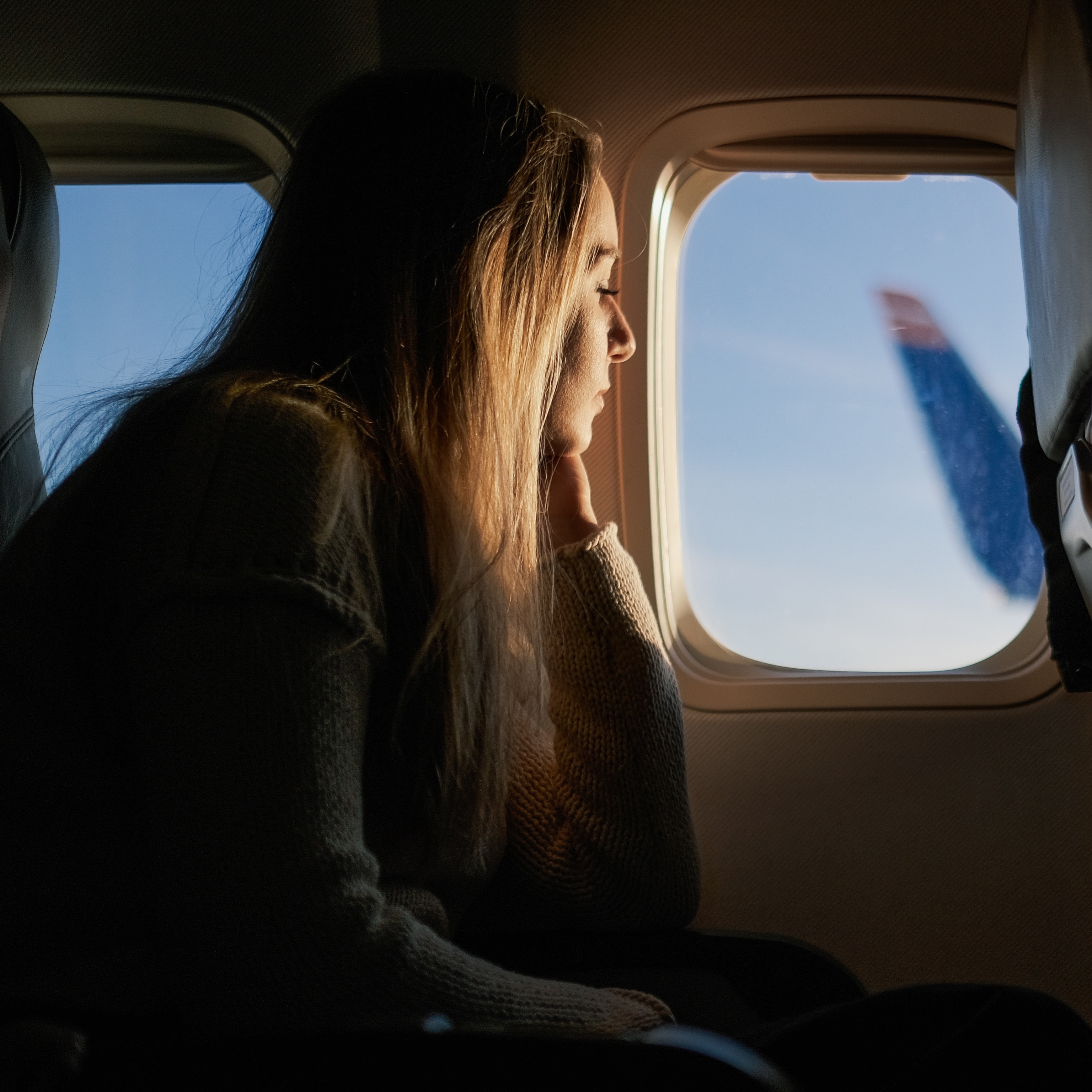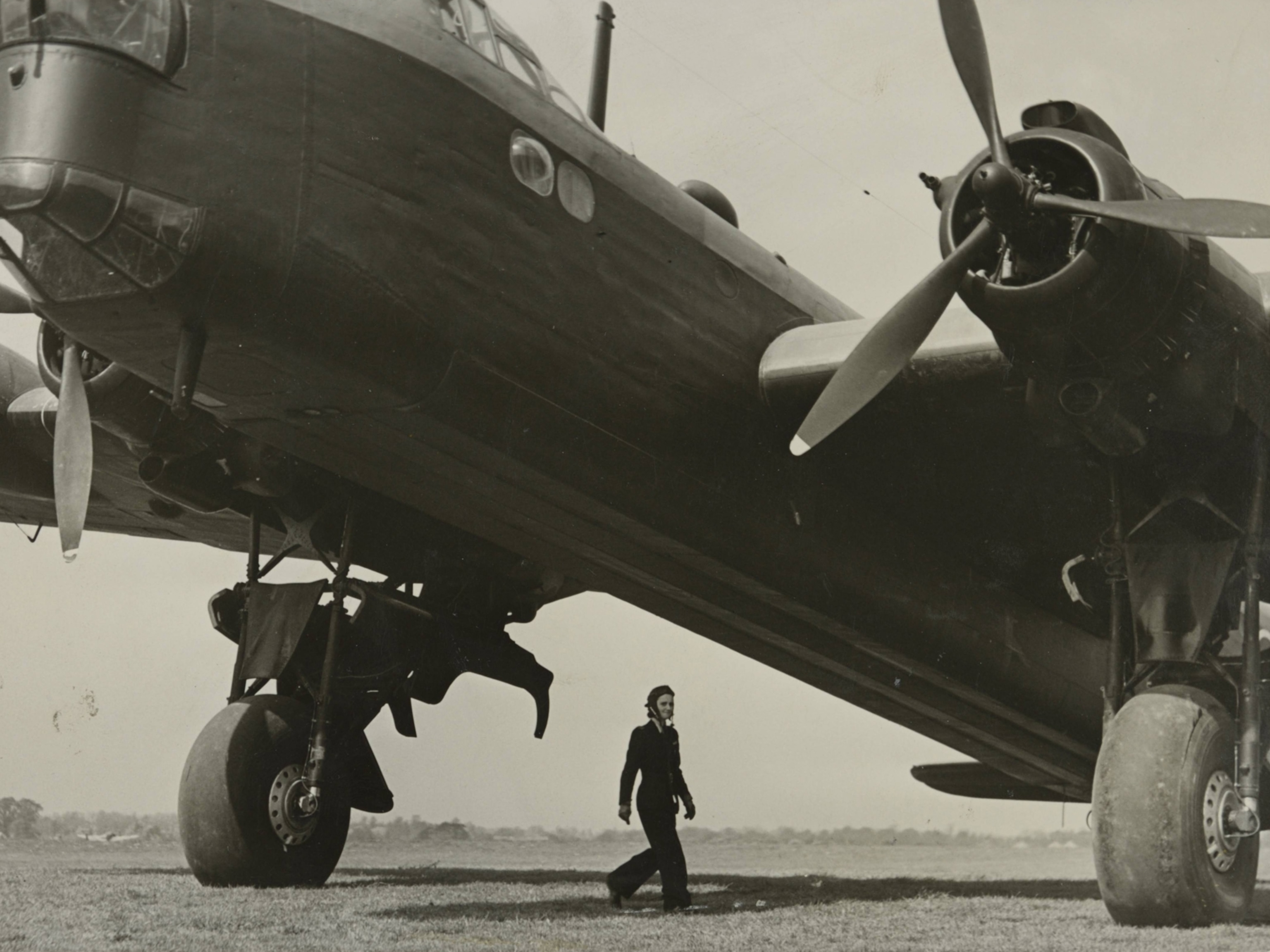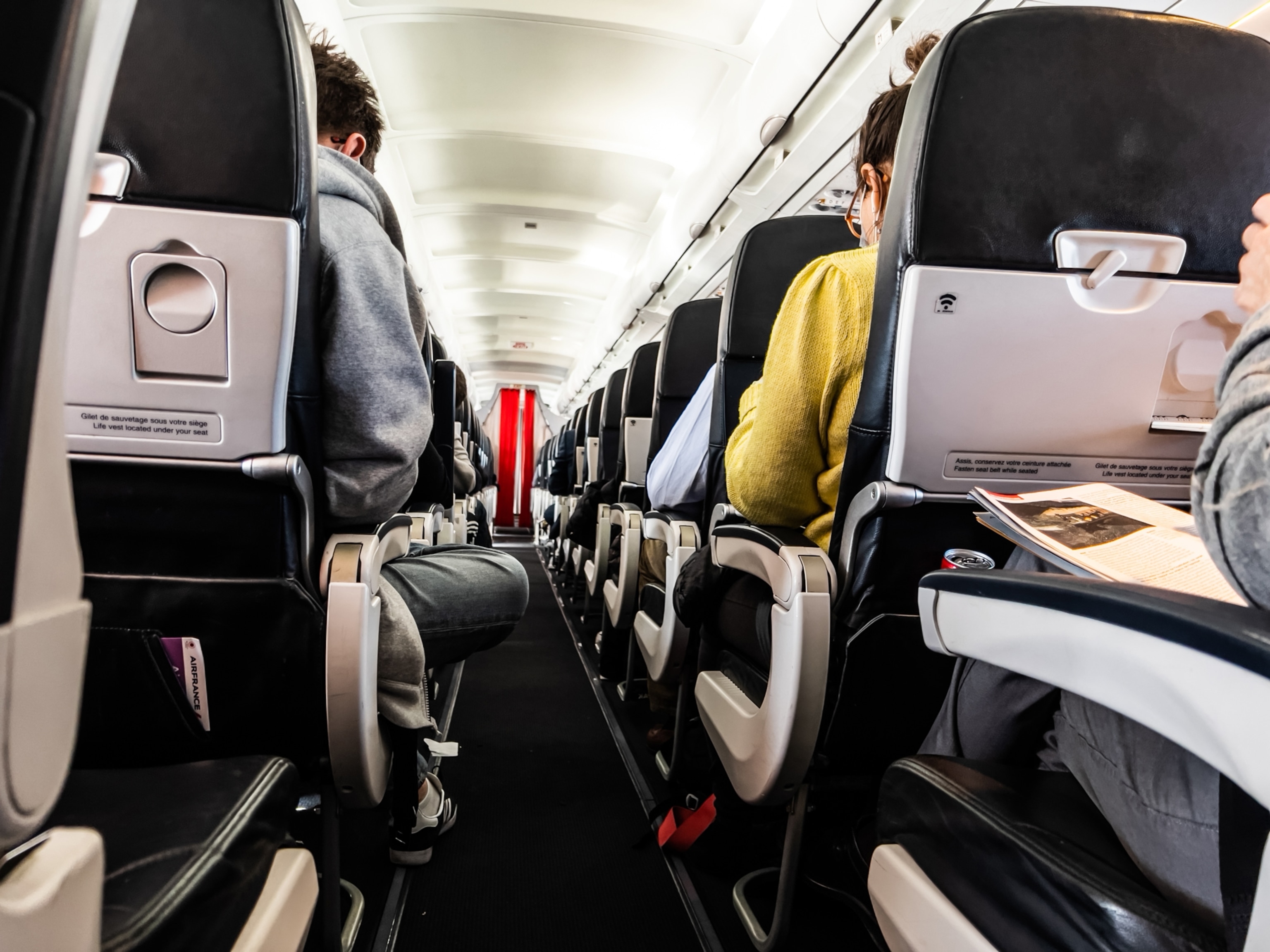
Solar Plane Launches on 'Earhart Leg' of Epic Flight
Swiss pilot will fly solo for up to a week over Pacific
After weeks of waiting in China for dangerous winds to calm and typhoons to clear away, a Swiss pilot finally took off Saturday on an unprecedented flight across the Pacific Ocean.
Wedged into the tiny cockpit of the Solar Impulse 2, an airplane powered entirely by sunlight, André Borschberg lifted off from a runway in Nanjing, China, around 3:00 p.m. EDT on the seventh leg in a planned 12-part circumnavigation of the globe.
It will be the longest and most dangerous leg of the journey so far. Borschberg, a former fighter pilot, is expected to spend nearly a week aloft, steering round the clock toward Hawaii at altitudes of up to 30,000 feet. He will fly far from the consolation of islands, landing strips, or easy rescue across a desolate expanse of ocean similar to the one in which Amelia Earhart disappeared 77 years ago.
Borschberg’s journey is expected to last six days and six nights as the lightweight, custom-built aircraft battles oceanic winds and weather on the 5,077-mile passage to Honolulu. If that schedule holds, he will land in Hawaii on Friday.
The flight, if successful, will be the first ever made across such a vast expanse by a solar-powered plane, and it will set a new bar for transport using clean technologies.
“Now it’s the moment of truth,” said Elke Neumann, a spokesperson for the Solar Impulse team,l who watched the plane rise into early morning darkness above Nanjing. “We’re all waiting to see what happens next.”
The journey was designed by Borschberg and his partner-in-adventure, the Swiss psychiatrist Bertrand Piccard, to push the limits of solar flight and highlight the potential of renewable energy.
Piccard conceived the idea more than 12 years ago when he nearly ran out of fuel during an attempt to make the first round-the-world flight in a gas-powered balloon. Ultimately he succeeded, completing the circuit in 19 days. But by the end of his historic voyage Piccard vowed never to let fuel limit him again.
“I wanted to be able to fly forever,” he said, in an interview before the Pacific attempt.
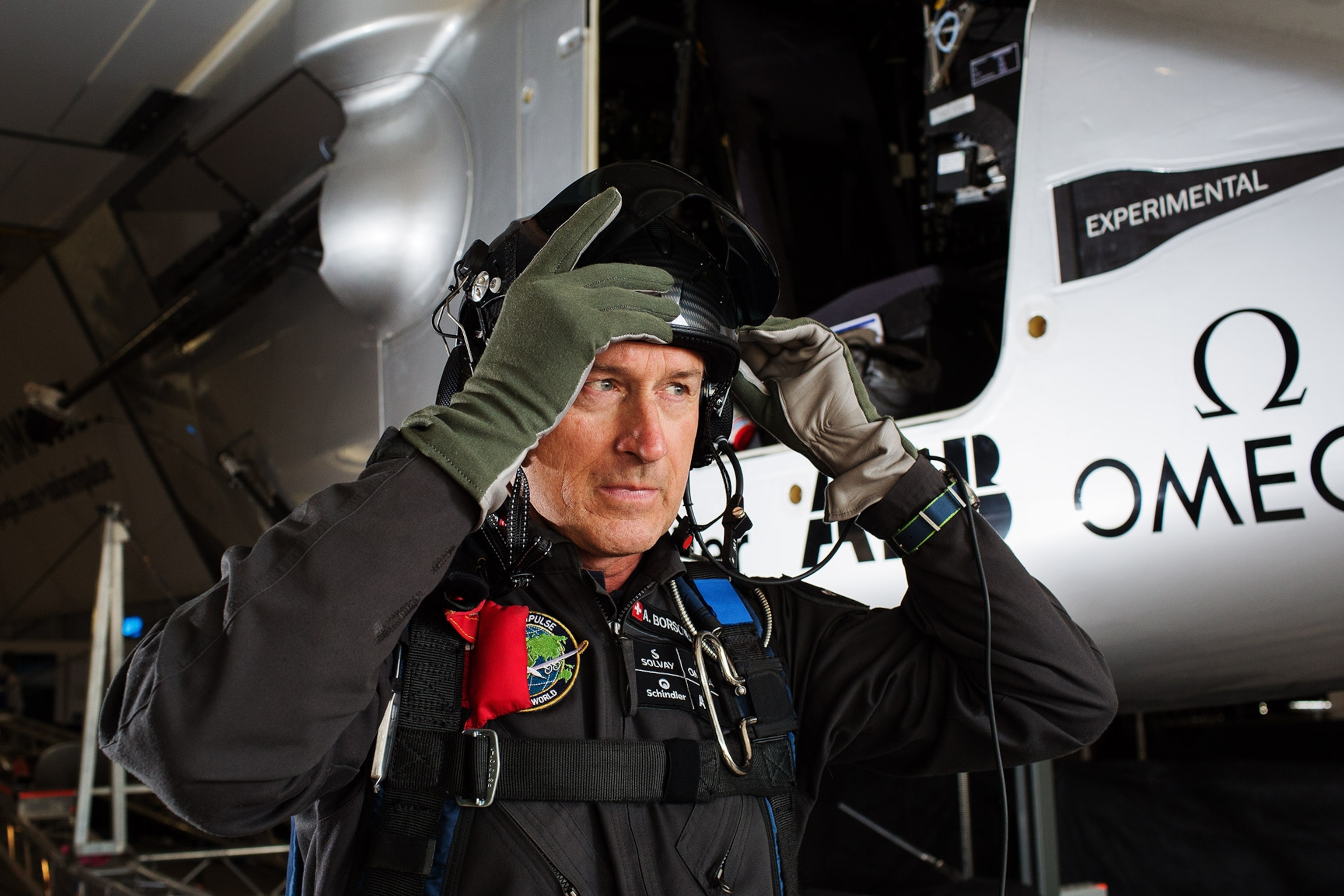
Today, after years of research and experimentation, the Solar Impulse 2 is built to do exactly that, at least in theory. With a wingspan of 236 feet, wider than that of a Boeing 747 passenger jet, and a long, slender fuselage composed of ultra-light carbon, the plane’s form follows its function.
A skin of more than 17,000 photovoltaic cells runs along the wing tops and down the spine of the plane, and this network powers all of its systems, from onboard computers and cockpit cameras to its four electric motors. The cells also feed four highly-efficient batteries, which store enough energy during the day to power the aircraft through the night.
The multi-day ocean crossing to Hawaii will provide the first major real-world trial of Solar Impulse 2, and this test will be followed almost immediately by a second, when Piccard takes the yoke and flies nonstop to Phoenix, Arizona.
We’ve done a lot of tests, but we’ve never done this.André Borschberg, Pilot
Piccard and Borschberg themselves will also be stretched as they each spend several days alone in a cockpit about the size of a car trunk, sitting on a seat that doubles as a toilet. They will be unable to stand, though the seat does recline, and will sleep only briefly, catnapping when the flying is calm.
“We’ve done a lot of tests, but we’ve never done this,” said Borschberg, who for many years flew fighter jets in the Swiss air reserves. “It’s the first time we’ll be so long in the airplane. Each cycle of day and night will be different. There will be a lot of information coming at us.”
The men began their journey in March, lifting off from a military airport in Dubai and heading east to Oman and Myanmar, to India and China. During stops for maintenance and rest, Piccard and Borschberg and a team of support staff worked to spread their clean technology message, hosting talks for local communities and opening their hangar to thousands of curious visitors.
So far the aircraft’s systems have performed well during flights of up to 20 hours, the pilots said. Small technical problems—an ill-fitting oxygen mask, the failure of solar cell, a misfiring alarm system in the cockpit—have been irritating, but easily fixed by the team’s ground crew.
A more persistent challenge for the pilots has been weather, which has been responsible for grounding the plane in China for nearly five weeks.
Neumann said strong crosswinds have been the main problem. Such winds rarely deter heavier, more powerful aircraft, but they can have outsized effects on the slow-flying, lightweight Solar Impulse 2, pushing it off course or forcing changes to the flight plan as the pilots hope to complete their Pacific travel before the start of monsoon season.
During the plane’s travel across Asia, crosswinds delayed takeoffs and landings several times. Piccard was even shoved backward by crosswinds on his approach to the airport in Chongqing, China.
“I almost disappeared from the air traffic controller’s radar because I was flying backward,” he said.
More recently, the pilots were forced to wait for two typhoons to dissipate near the Philippines, and for oceanic cloud cover to clear so the photovoltaic cells would be able to sufficiently charge the plane’s batteries. The team built wait-time into their schedule, but Neumann said they were still surprised by the Pacific’s wild weather.
“We’ve been doing simulations on this for years and it’s just different from year to year,” she said. “You can’t predict more than about three days out. Still now we don’t know how the weather will be in Hawaii.”
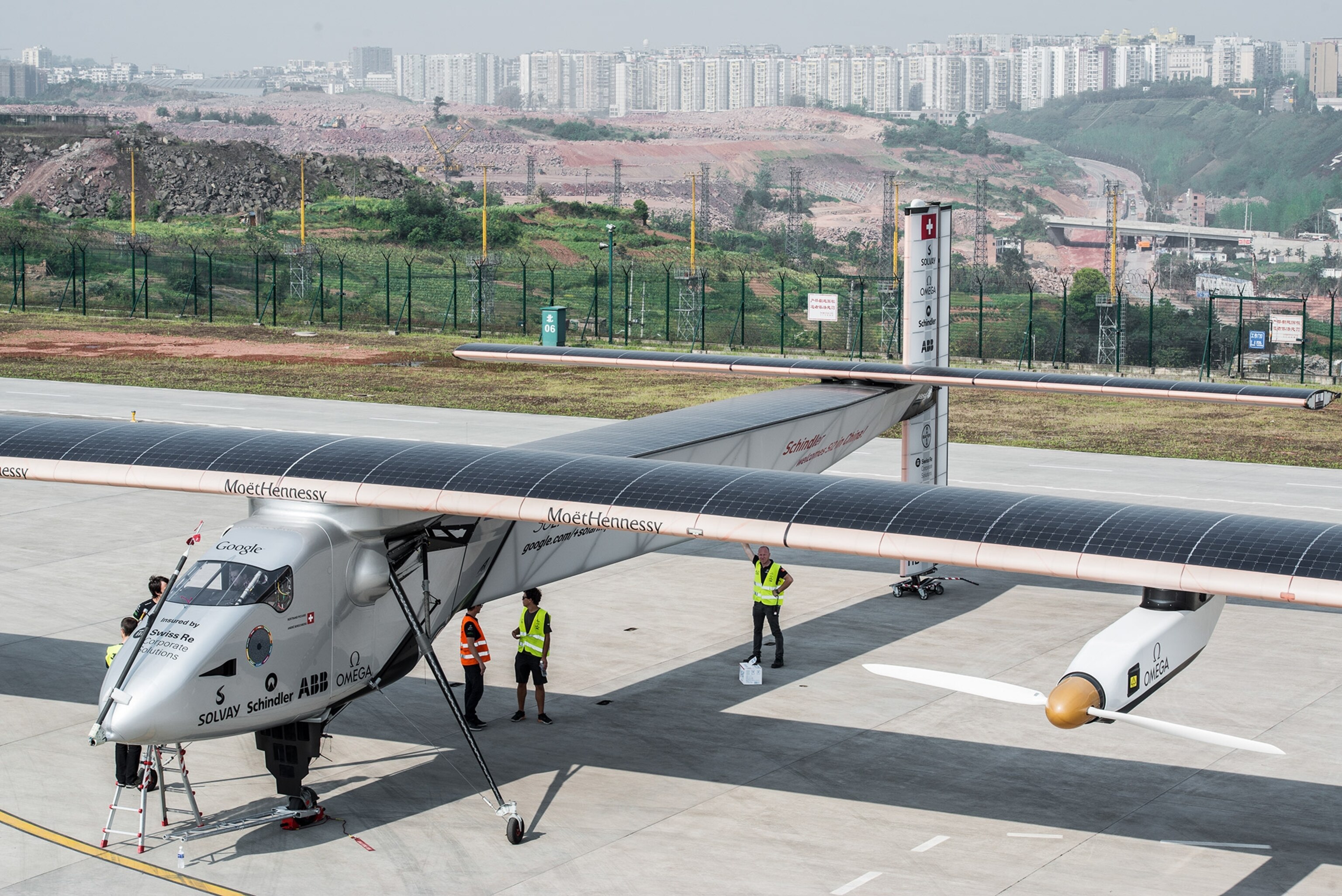
Saturday’s takeoff sends the plane and its pilots into a new dimension where weather will be only one in a shifting array of variables and potential problems. Beyond reach of land, minor malfunctions can’t be easily fixed. Exhaustion, too, will dog the men and may be the heaviest burden of all.
In about one-and-a-half days, Neumann said the plane would reach a point of no return, where prevailing wind currents would make it extremely difficult, if not impossible, for the plane to circle back to China.
“The plane can’t just go wherever it wants,” she said. “It has to go with the wind, and with the sun.”
Still, Piccard and Borschberg said that they had spent years planning for weather and other risks, and searching for ways to stack the odds in their favor.
With the German navy they had parachuted into the cold waters of the North Sea and practiced untangling themselves from twisted cords and hauling themselves into a life raft. With yoga instructors and medical doctors they had designed meditation schemes and nutrition plans to keep them alert and healthy.
And, during each leg of the journey, a mission control team based in Monaco will monitor the plane’s progress and provide regular weather reports. Former aviators—some of them old military friends of Borschberg’s—are on hand to offer advice and support.
Should Borschberg need to ditch, he will take with him down to the sea a parachute, a life raft, food, and a radio. After that the plan is to call for rescue, either by way of some friendly navy, or by the luck of a passing ship.
For Piccard, such possibilities have long been woven into a family tradition of adventure. In 1960, Bertrand Piccard’s father, Jacques, descended in a bathyscaphe to the deepest parts of the Pacific. In 1931 his grandfather, Auguste, floated into the stratosphere aboard a balloon equipped with a pressurized passenger capsule.
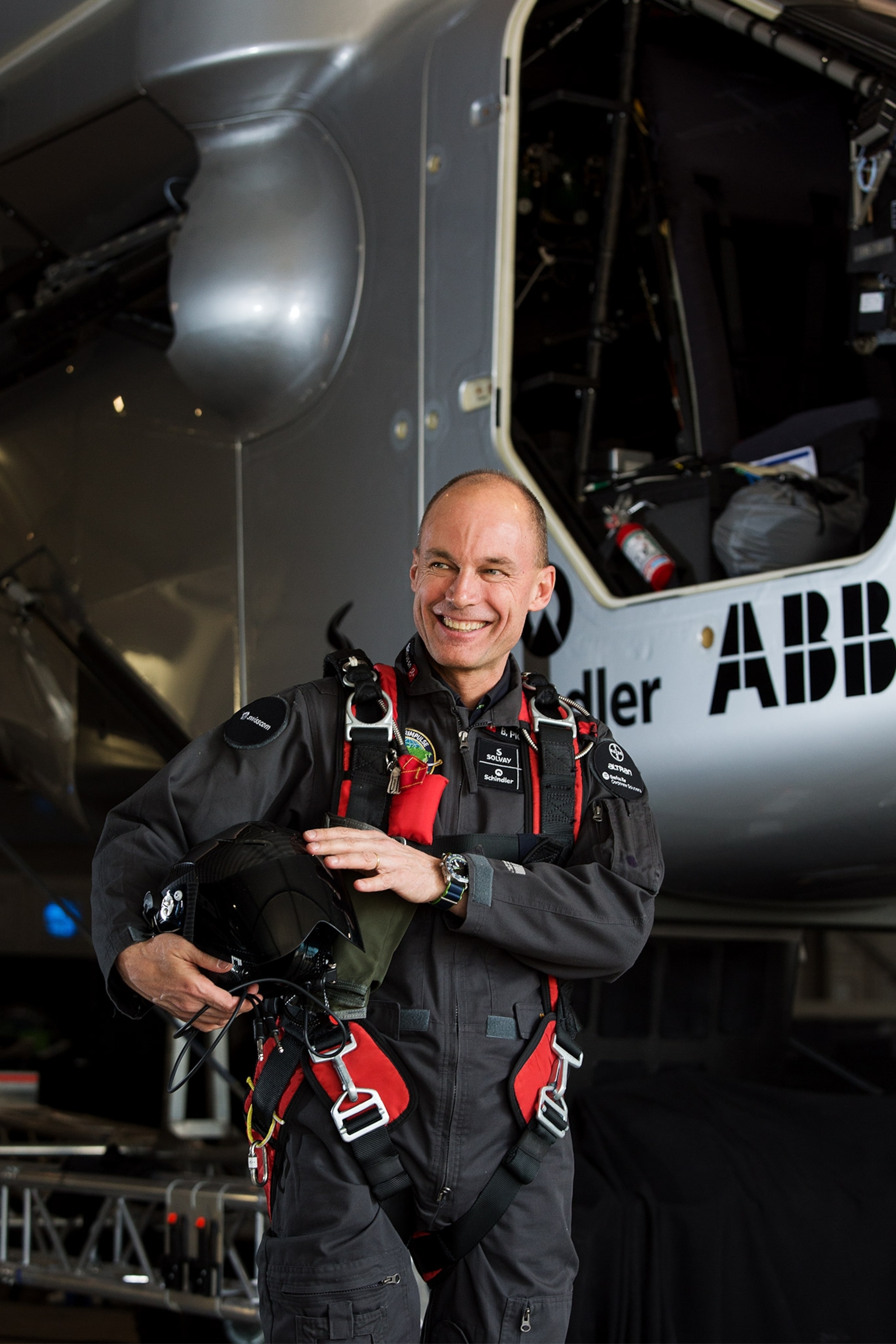
Auguste knew Amelia Earhart. Bertrand Piccard remembers seeing them together in an old photograph.
“I’m a little jealous of my grandfather for that,” he said. “She was such a beautiful person. I will have a thought for her when I’m flying over.”
Borschberg said before his flight that he was eager to see how weather, technology, and human endurance would combine in the days ahead. He had spent more than a decade thinking about this flight. Dreaming of it, and trying not let the dream become an obsession.
“Being humble and being a little bit detached is important,” he said. “To not be too target-focused. I am more excited about what’s coming than I am nervous. I believe we have a great airplane.”
For the next several days he will put that faith into practice over the earth’s greatest ocean, flying by light alone. At a certain point he knows his thoughts will turn toward that first glimpse of green on the blue and the soft shudder of his wheels touching down. He said he would try not to want it too much.
Neil Shea is a writer based in Boston and a longtime contributor to National Geographic. Follow his stories from the field on Instagram @neilshea13.

